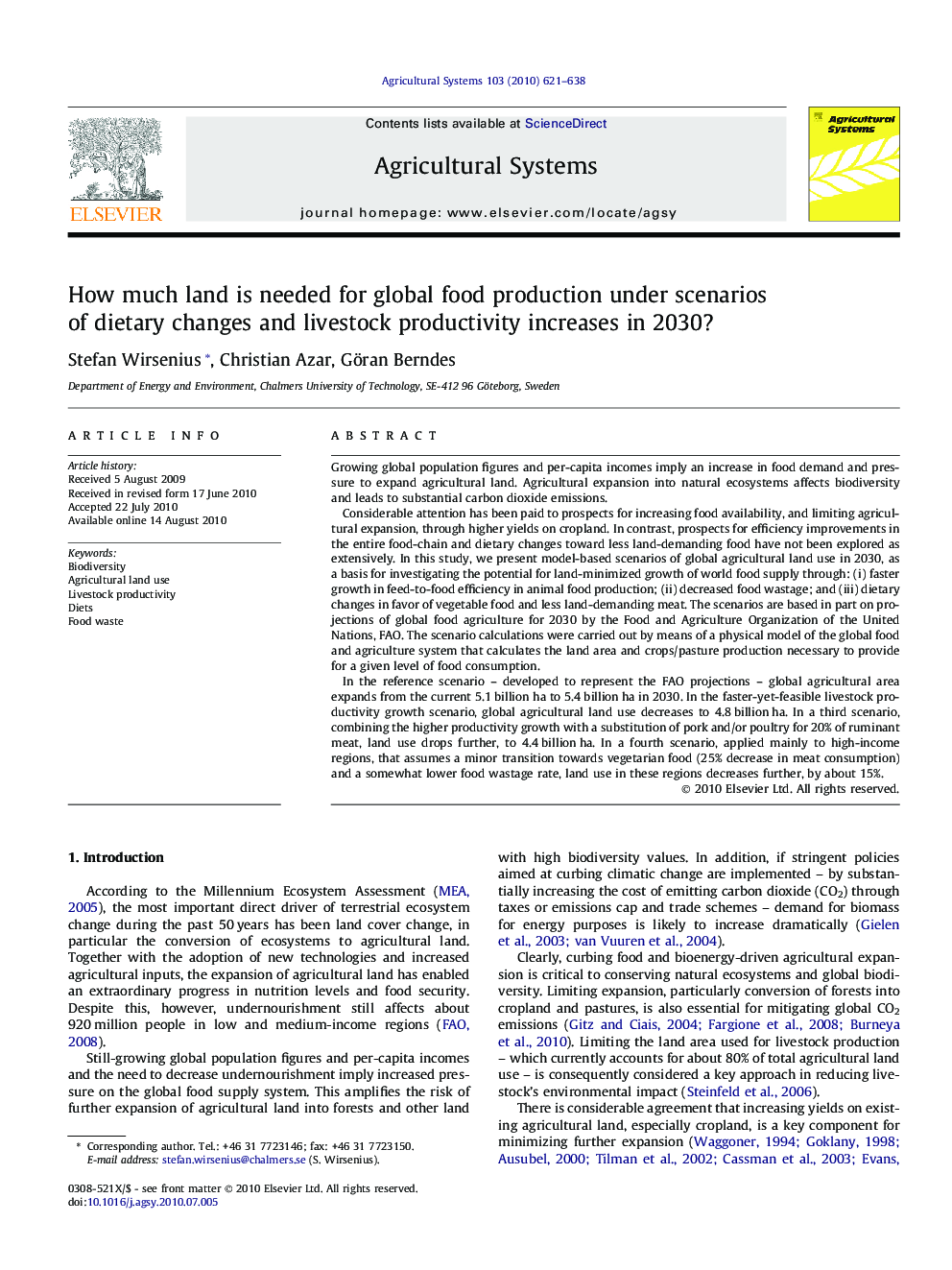| Article ID | Journal | Published Year | Pages | File Type |
|---|---|---|---|---|
| 4491533 | Agricultural Systems | 2010 | 18 Pages |
Growing global population figures and per-capita incomes imply an increase in food demand and pressure to expand agricultural land. Agricultural expansion into natural ecosystems affects biodiversity and leads to substantial carbon dioxide emissions.Considerable attention has been paid to prospects for increasing food availability, and limiting agricultural expansion, through higher yields on cropland. In contrast, prospects for efficiency improvements in the entire food-chain and dietary changes toward less land-demanding food have not been explored as extensively. In this study, we present model-based scenarios of global agricultural land use in 2030, as a basis for investigating the potential for land-minimized growth of world food supply through: (i) faster growth in feed-to-food efficiency in animal food production; (ii) decreased food wastage; and (iii) dietary changes in favor of vegetable food and less land-demanding meat. The scenarios are based in part on projections of global food agriculture for 2030 by the Food and Agriculture Organization of the United Nations, FAO. The scenario calculations were carried out by means of a physical model of the global food and agriculture system that calculates the land area and crops/pasture production necessary to provide for a given level of food consumption.In the reference scenario – developed to represent the FAO projections – global agricultural area expands from the current 5.1 billion ha to 5.4 billion ha in 2030. In the faster-yet-feasible livestock productivity growth scenario, global agricultural land use decreases to 4.8 billion ha. In a third scenario, combining the higher productivity growth with a substitution of pork and/or poultry for 20% of ruminant meat, land use drops further, to 4.4 billion ha. In a fourth scenario, applied mainly to high-income regions, that assumes a minor transition towards vegetarian food (25% decrease in meat consumption) and a somewhat lower food wastage rate, land use in these regions decreases further, by about 15%.
Research highlights► FAO projections imply that global agricultural area may expand by 280 Mha in 2030. ► Faster growth in livestock productivity may decrease global area by 230 Mha in 2030. ► 20% substitution of ruminant meat may decrease area by an additional 480 Mha.
